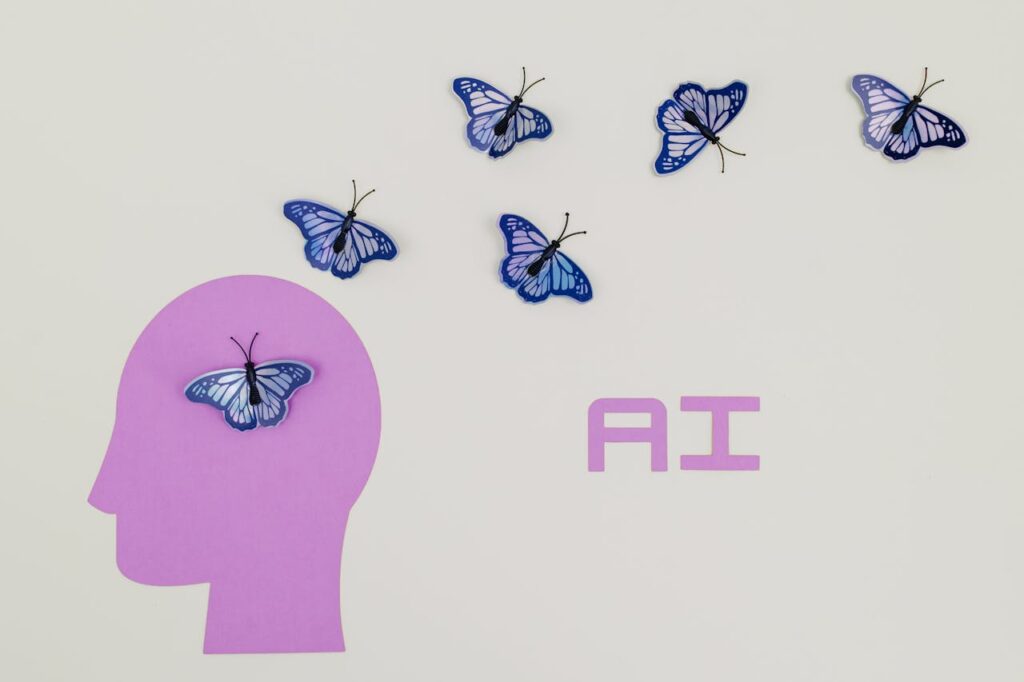In recent years, generative AI has become an important part of different industries and businesses. A complex generative AI architecture is involved behind generative AI models creating new content, whether it’s text, images, or 3D designs. Understanding this architecture is important because only then you can fully utilize artificial intelligence services for your business in order to make it grow. This comprehensive guide delves into the GenAI architecture, its components, AI vs GenAI, and how it’s transforming industries worldwide.
What Is Generative AI Architecture?
Generative AI architecture refers to the foundational structure and design of systems that enable generative AI models to learn, process, and generate data. It outlines the relationships between various components, such as neural networks, algorithms, and data pipelines, that work together to create outputs. Unlike traditional AI systems focused on recognition and prediction, generative AI architecture design and GenAI architecture diagrams enable creativity, empowering machines to produce novel and realistic content.
Key elements of AI system architecture include data input layers, processing units, model frameworks, and output mechanisms. The AI model architecture’s complexity varies depending on the use case, such as generating realistic images, crafting human-like text, or even designing architectural blueprints.
Components of Generative AI Architecture

The architecture of generative AI models is built on a number of different components. Let’s discuss them one-by-one!
Data Processing
Preprocessing data is crucial for making sure that generative models work correctly and effectively. Turning unprocessed data into a neat, uniform structure lays down a strong base for achieving the best possible performance from the model.
Having high-quality, varied data is essential for improving the performance of models, allowing for precise and dependable outcomes. Methods such as selection, alteration, and normalization of data get it ready for learning, guaranteeing uniformity and organization.
Model Selection
Selecting the right model is crucial to produce continuously improving results. Every generative model comes with its own set of advantages and uses. Main models consist of GANs, VAEs, and transformers, each possessing distinct characteristics. These models are designed for particular purposes, with some models performing exceptionally well in tasks such as creating images or generating text, based on the needs of the application.
Training and Optimization
Training and optimization play an important role in the development of generative AI models because only this way you can make sure that a model is producing the desired results. Implementation of proper training and optimization techniques makes sure that AI platform architecture models give optimal performance. It is important to know that selection of appropriate training techniques and fine-tuning models is important to make the artificial intelligence architecture models do their job optimally.
There are different learning methods for AI system architecture models, such as supervised, unsupervised, and reinforcement learning. Labeled data and unlabeled data is used in supervised and unsupervised learning respectively, whereas trial and error technique is utilized in the case of reinforcement learning.
Role of Artificial Intelligence Architects
An AI solution architect plays a critical role in designing and implementing generative AI systems. They bridge the gap between business goals and technical execution by:
- Designing scalable and efficient artificial intelligence architecture tailored to specific use cases.
- Ensuring that AI platforms integrate seamlessly with existing systems.
- Addressing ethical concerns and ensuring compliance with regulatory standards.
Their expertise is essential for deploying AI solutions that are innovative, ethical, and impactful.
Conclusion
Understanding generative AI architecture is crucial for making use of the power of AI in modern industries. From generative AI for marketing content to generative AI in e-commerce and architectural design, there are a number of different uses of generative AI architecture. By adopting advanced AI system architecture, businesses can harness the creative capabilities of AI to innovate and stay ahead in an increasingly competitive landscape.
Whether you’re an artificial intelligence architect designing solutions or a business leader exploring AI’s potential, generative AI opens doors to limitless possibilities. With its ability to learn, adapt, and create, generative AI is reshaping how we approach technology and creativity.
Contact Mobiz, an IT solution company, today to learn more about generative AI architecture!
FAQs
What is generative AI in architecture?
Generative AI for architecture uses AI-driven techniques to create designs, blueprints, and models for buildings and structures. By analyzing data such as environmental conditions and material properties, generative AI offers innovative solutions that streamline the design process and introduce new creative possibilities.
What is the architecture of an AI model?
The architecture of an AI model refers to its structural design, including data input layers, neural network frameworks, and output mechanisms. It defines how data flows through the system, enabling the model to learn patterns, process information, and generate outputs effectively.
What are the examples of AI architecture?
Examples of generative AI reference architecture include:
- Generative Adversarial Networks (GANs): For creating realistic images.
- Transformers: Used in natural language processing models like GPT.
- AI-driven platforms: For tasks like recommendation systems, marketing automation, and architectural design.
Empower Your Business with Our Innovative IT Solutions!

- Cloud Services
- ServiceNow Integrations
- AI Implementation on Azure OpenAI
Join the newsletter!
Data insights and technology news delivered to you.
By signing up for our newsletter you agre to the Terms and Conditons

